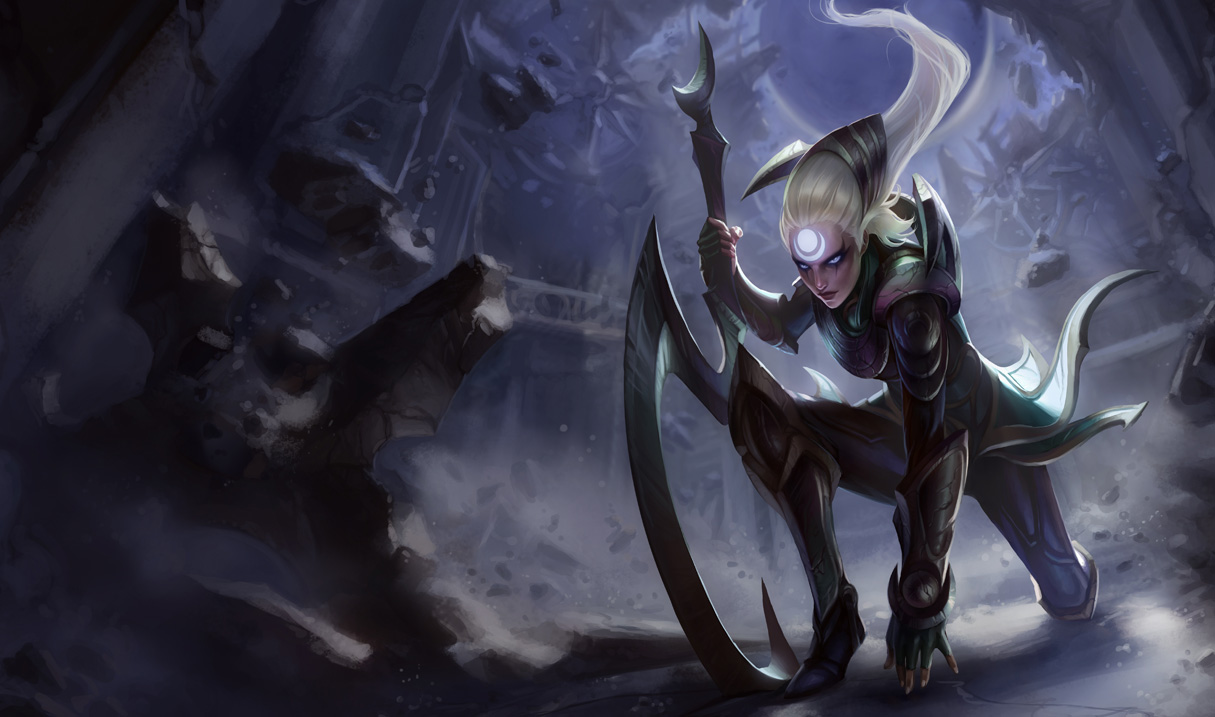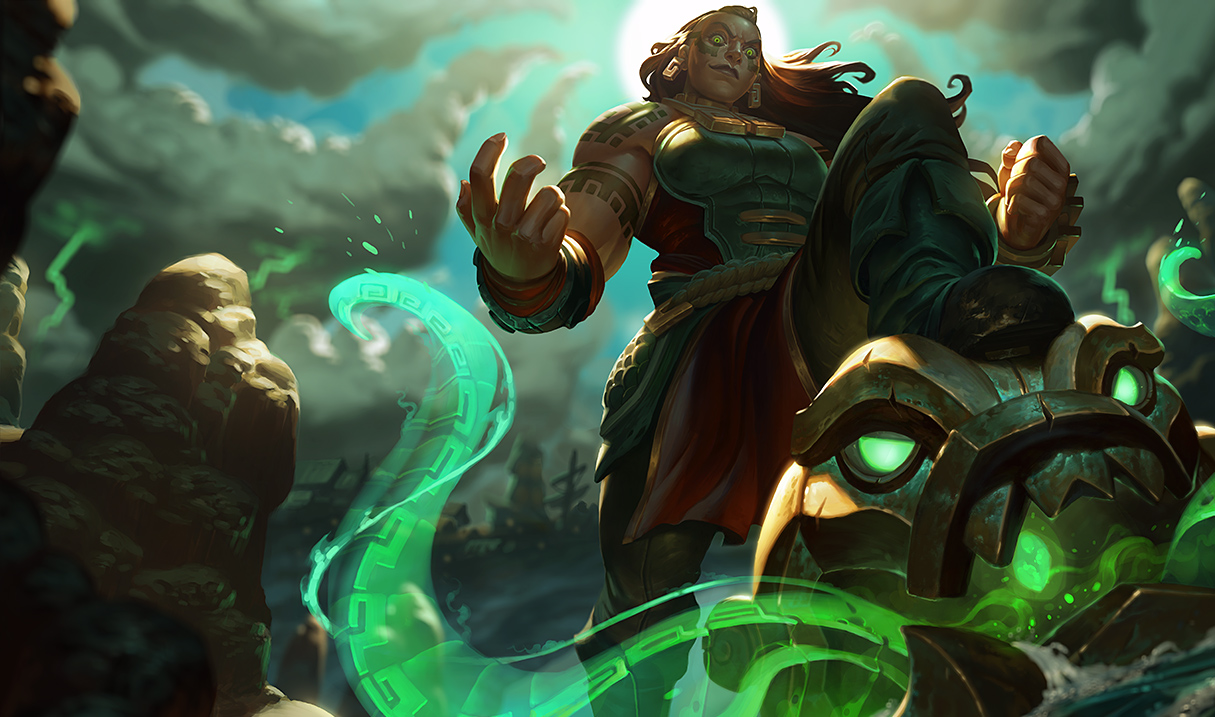The case for all-women League of Legends leagues
Broadening the scene can only make LoL bigger and better.

All-women teams have been a controversial topic that pop up again and again in the pro League of Legends community, and each time there’s the same dialogue—some of it positive, some of it negative, and some of it that rejects the notion of the dialogue altogether, saying that gender and gaming should be a non-issue. Team Siren is the most memorable fracas from recent history, where five women starred in a slickly produced but frankly laughable video that has gifted the League community a host of memes still used to this day.
There have been smaller attempts at making an all woman roster, including Chinese team OMG starting an Oh My Girl! Team. Female players in esports, including Masq from CS:GO, have spoken about the existence of women-only leagues and whether they help or hinder the development of players who are trying to make it to the ‘big time’. Now that Team YP (sponsored by YouPorn, a team barred from most competitive leagues due to the salacious nature of their product) has picked up a team of women, the dialogue has begun anew.
Two caveats
Before I begin stating my reasons for why I think woman only leagues are not just positive, but necessary, I’d like to mention two things:
First, I think that women and men should be playing together, and agree with Masq that this is the ultimate end goal. I don’t think that there’s a real reason to segregate esports based on gender when it comes to in-game achievements or prowess.
Second, I recognize that many of the attempts to create an all woman team are not good faith efforts to boost the profile of women gamers attempting to build a career. Team Siren was not a feminist movement—it was a business tactic that went horribly wrong.
So what role should women only leagues serve, if they’re not the end game?
Providing a strong starting point
If you’ve been immersed in gaming for years, or even decades, it can be tough to realize just how many skills are transitional from game to game. I grew up sitting in front of my older brother’s NES at Mario, and started playing Starcraft at 8 before earning a Sylvanas icon in Warcraft III’s multiplayer—even with a long history of learning to check the map, position a hero, and manage my skill cooldowns, it took me multiple attempts to get into League.
The biggest gaming news, reviews and hardware deals
Keep up to date with the most important stories and the best deals, as picked by the PC Gamer team.
At the moment, most women who are getting into the idea of playing League have likely grown up in a household or atmosphere where they haven’t been interested in playing games, let alone competing. As casual gaming platforms like the Wii and continue to rope in new gamers, and esports lures in more fans and competitors, we’ll likely see more women get interested in sitting at a keyboard and giving competitive play a try.

A thorny path
The problem is that there are very few jumping on points for these women. In theory, it’s simple: git gud, just like a man, and join a Challenger team and struggle on. However, women players face barriers that men don’t that can discourage them from playing professionally. Think of the ways that men build up their League careers:
- They network with other players
- They stream or build YouTube presences
- They join amateur teams and play in small scale tournaments
Are these things impossible for women? Absolutely not. Are they predominantly male environments? Yes. Are there unique hazards presented to women entering them? Yes. Can that dissuade players who are already balancing trying to pick up new mechanics, master their mains, and look into options? Of course. Something that’s possible can still be intimidating, and it makes sense to provide options to help streamline the process. If everyone is dreaming about ending up on the world stage, but there’s only one path that looks terrifying to most people, why not lay down more paths to open up an influx of new players?
When you consider the amount of harassment that women can face in esports, the burden of discouragement becomes even greater. Whether it's the white noise in the background that comes with being a woman who jumps on Discord (“are you a girl? You sound hot. Are you fat?”) or the large scale behaviour we see when women are on the spotlight (Twitch chat exploded with some truly hateful speech every time the Renegades’ Remilia appeared on camera), it’s easy to see how a woman who wants to play some League could be turned away.

Everybody wins
Some players might protest that opening up new avenues for players diminishes the achievement of making it to the top. It should be a rare achievement to be winning League tournaments and playing competitively, and it’s okay for it to not be open to everyone, or so the argument goes. The point of elite competition should be that its elite, and trying to open new avenues to make demographics even diminishes that.
However, having multiple tiers of competition and allowing multiple ways for people to compete only enriches the League of Legends scene. Having local tournaments should be encouraged, having new player tournaments should be encouraged, and having tournaments for women should be encouraged. These things lead to more players entering the scene, more money and more sponsors, more interest in the scene, and more talent for the top teams to scout and recruit from.
Expanding the scene doesn’t mean that it’ll be diminished at the top tiers—it builds a foundation that will lead to more League being played for longer. Official Riot tournaments continue to grow in both size and scope, occupying massive arenas like the Madison Square Gardens and the Air Canada Center. However, these big productions are fueled and supported by smaller, grassroots organizations. Let the women play, and if they need a few stepping stones, it’s worth a shot. It’s not a permanent solution, but it could be what it takes to close the gap and lead to a truly mixed, diverse professional league.

